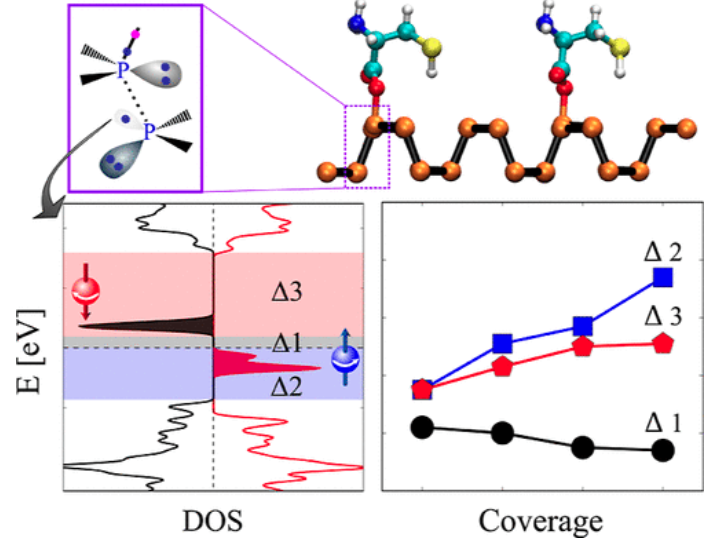Functionalization of two-dimensional (2D) materials represents an efficient strategy to enhance their versatility, either for improving their stability under specific ambient conditions or for tuning their physical properties in a potentially relevant technological direction. In this study, we investigate with spin-polarized density-functional theory the electronic properties of phosphorene monolayers functionalized with hydroxyl and cysteine molecules. We show that functionalization leads not only to electronic states within the semiconducting gap but, more interestingly, to local magnetism as well. In consequence, ferro- or anti-ferromagnetic ground states can be obtained in dependence of molecular coverage, lattice direction (zigzag vs armchair) of the molecular adsorption, and, in the case of cysteine, molecular chirality. Based on an analysis of the obtained spin-dependent band structures, we propose to view functionalized phosphorene monolayers as bipolar magnetic semiconductors (BMS). In particular, the electronic parameters used to characterize BMS are shown to become increasingly distinct with increasing surface coverage. This suggests a possible route to design BMS via targeted molecular functionalization.

Functionalization of two-dimensional (2D) materials represents an efficient strategy to enhance their versatility, either for improving their stability under specific ambient conditions or for tuning their physical properties in a potentially relevant technological direction. In this study, we investigate with spin-polarized density-functional theory the electronic properties of phosphorene monolayers functionalized with hydroxyl and cysteine molecules. We show that functionalization leads not only to electronic states within the semiconducting gap but, more interestingly, to local magnetism as well. In consequence, ferro- or anti-ferromagnetic ground states can be obtained in dependence of molecular coverage, lattice direction (zigzag vs armchair) of the molecular adsorption, and, in the case of cysteine, molecular chirality. Based on an analysis of the obtained spin-dependent band structures, we propose to view functionalized phosphorene monolayers as bipolar magnetic semiconductors (BMS). In particular, the electronic parameters used to characterize BMS are shown to become increasingly distinct with increasing surface coverage. This suggests a possible route to design BMS via targeted molecular functionalization.
